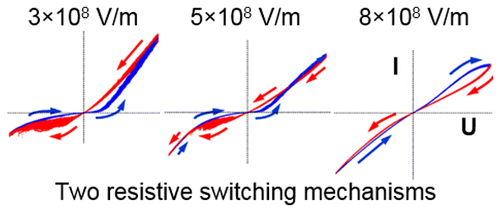~ 32 ~
~ The Study of Threes ~
http://threesology.org
| Devil's Advocate Series: | ||||||||
|---|---|---|---|---|---|---|---|---|
| pg.1 | pg.2 | pg.3 | pg.4 | pg.5 | pg.6 | pg.7 | pg.8 | pg.9 |
| pg.10 | pg.11 | pg.12 | pg.13 | 14A 14B |
pg.15 | pg.16 | pg.17 | pg.18 |
| pg.19 | pg.20 | pg.21 | pg.22 | pg.23 | pg.24 | pg.25 | pg.26 | pg.27 |
| pg.28 | pg.29 | pg.30 A | pg.30 B | pg.31 | pg.32 | pg.33a | pg.33b | pg.33c |
| pg.34 | pg.35 | pg.36 | pg.37 | pg.38 | pg.39 | pg.40 | pg.41 A | pg.41 B |
I began working on this page early yesterday after copying and pasting the recurring HTML preliminaries characteristic of each page in this series. After which I began reconstructing another timeline orientation involving bits and pieces of questions involving various "origin" ideas such as the origin of the Universe, water, oxygen, moon, etc... Needless to say that exploring each of these leads one down paths where some type of "three" reference may be found. But as the Sun began to rise and I had other things to do in the daylight, I came to set the task aside.
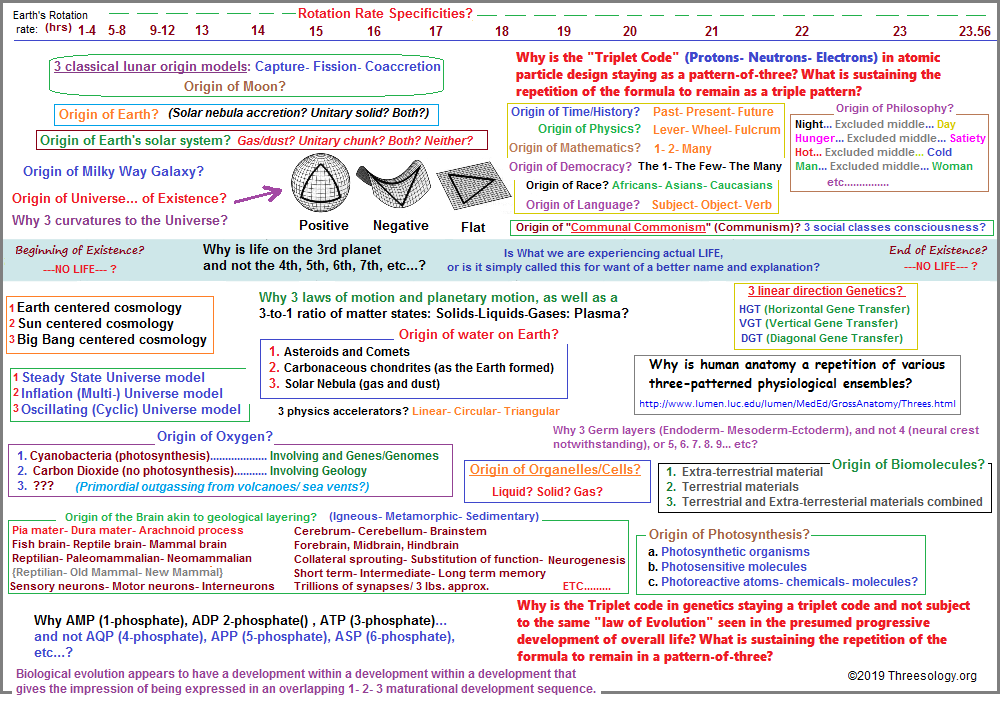
Here is one view of attempting to diagnose the origin of oxygen on Earth:
How the Earth got its Oxygen
by Ashley Junger, Heather Mongilio, Kelsey Tsipis, Fatima Husain
for EAPS News; Wednesday, May 30, 2018
With respect to the idea of "Horizontal Gene Transfer", the ideas of Diagonal and Vertical directions come to mind by applying a "threesological" point of alternative viewing. Just because the main investigators in a given field are preoccupied with a given type of genetics formulation does not mean others do not exist. The time period in which such investigations are taking place should be thought of in terms of limiting factors due to the insufficiency not only of laboratory tools, but also of the philosophy being applied by the researchers. If they do not have an appreciable grasp of the relevance in which a "pattern-of-three" occurrence takes place in multiple subject areas, they may not, by convention, tend to think in terms of considering alternatives to their present orientations which may involve a singular or dual design parameter. We must be cognizant of the fact that we humans, with our type of physiology may think we see a particular type of configuration, because we are culturally or socially or academically oriented to think in terms of the constraints being used and accepted as a commonality, when our research might well benefit from alternative orientations of visualized application. For example, the usage of the word "clocks" in the notions of Molecular and Geological clocks may be viewed as a comforting metaphor, but the comfort can lead one towards being too comfortable, which is detrimental to the type of creative thinking which springs from discomfort... in search of a resolution.
I return now after having been awakened by ideas revolving around early (and present) experiences in life which lead me along paths where addressing issues I encountered created efforts at remediation which turned into elaborations that I now chuckle to myself about. However, just after retiring and began taking that dip into the precursive stage of deeper sleep in which I began to dream, (I am speaking of Saturday night the 19th), I experienced a short period of panic in the dreamscape by thinking I was lost and could not find either an external nor internal means of re-orienting myself. Along with this I witnessed myself viewing myself standing with what appeared to be two other people approximating some externality to both these versions of myself, whereby there were three of me observing the whole from three different vantage points. As most of my dreams occur, this was fleeting but this one was quite poignant so as to cause a vivid recall. I had never experience a sense of panic to which I attribute to an illness which caused me to perspire restlessly through the night.
As an example of an early experience, let me tell the tale that may be similar to that encountered by others but they came away with different memories: In my pre-teen years I mowed lawns for a little money and came to encounter the need for starting and stopping the mower; along with the eventuality of learning to put gas in the tank; sharpen the blade; change oil; cleaning the air filter; cleaning, gapping or changing the spark plug; to attach or not attach a grass catching bag; cleaning the mower after mowing; and which direction to make the overlapping trail of the mower as I walked behind it. In particular, the task of shutting off the motor was a very big issue because it entailed flipping over a piece of metal that was attached to the frame and would thus ground out the spark plug, and crudely referred to as a "kill switch". (And by the way, when I was very young I heard the old men refer to spark plugs as "sparking" plugs. And it was from them who told me not to put batteries on the concrete floor, which was an old idea involving glass cells encased in wooden boxes (as I have read about since then), and does not apply to present day designs. I provide these excursive recalls as an indication of the type of early education I had from those who thought they were mechanically minded, by offering tidbits of information they had heard from others... and so on, which they no doubt thought gave them the appearance of having some mechanical knowledge, when very few of them even finished high school, as was the common educational theme occurring during their day and age.)



However, my effort to stop the lawn mower often caused me to get shocked by touching the metal tab to the spark plug. I then devised the idea of putting a switch between the spark plug and spark plug wire which helped me to avoid getting shocked. I was quite pleased with myself. When I told a neighbor who was a high voltage lineman, he didn't think it was necessary, since the (in his estimation) "the little shock" was nothing to worry about. Yet, from my youthful perspective and experience it was a big deal, though I took his advice and removed the switch. Thereafter I used a glove or some non-metallic extension of my hand to short-circuit the spark plug connection. Yet later on I no longer took his advice since I came to find out later as I began to work on automotive engines and related automotive parts, he did not have as many mechanical (nor electrical) skills that I once thought as a young boy. I came to take apart my first engine (a 1966 Volkswagen) when I was 14 years old. I got it running again, even though I had parts left over. It was not until recently that I came across an appropriate expression that would have been much fun to wear if they had existed:

The point of this narrative is to bring to the fore the presence by which the problem was addressed by adding on a means to address the issue (in this case an electrical toggle switch), which may well be a route that nature not only influences us humans to do, but also portrays such an influence in other aspects of events in biology, physics and other subjects humans have thought to create as explanation, experimentation and elaboration models, by their observations of life events, both static and dynamic. Whereas many a person has said there is a need to simplify, the simplification may not be found except through an effort of extensive complexification. A "complexification" of an otherwise simple model takes place in an effort for the human brain "to get its head around" in understanding a design or process, because human ego likes to think it is involved with something that is deep, mysterious and complex, and in particular, only one or a few are able to grasp the intricacies... which makes the person or group an exclusive set of humans that others should pay some type of homage to and provide one or another deference.
The "complexification" may be the result of compounding a singularity such as in the doubling of a cell that we call cellular development (and frequently view as progress labeled as evolution); or in the compounding of atoms to create an object. For some reason, we humans are inclined to think that "more is better" and represents progress or greatness. Oftentimes however, the "adding of a switch" or alternative direction (such as a mutation in genetics) (or an errant particle from an atomic collision), creates a situation that can and does answer a problem experienced from one perspective, but another perspective interprets it to be a superfluous action that can be done away with; thus requiring the development of a new design which incorporates an off/on switch as an added feature, and the design of which is packaged in a model which conceals the crudely (but affectively) applied wire and switch taped to one of the handles— as I had done in my experimentation, and was critiqued by a neighbor as being an unnecessary attribute.
For example, humans switched from one bipedal design of hominid to another... and we think that this switching will continue into the future, whereby future humans will somehow be more advanced... "more better" than present variations of the types of bipedal forms switched into. From tree dwelling creatures, humans switched into Savannah walking creatures. Others switched into those which followed shorelines, imagined trails in woodlands, into deserts, mountains, valleys, etc... We humans have switched our diets and clothing and languages. We have switched governments and economic ideologies. We have switched between lovers, occupations, religions, sports, games of chance, paths to walk, places to eat, clothes to wear, brands, etc... Yes, many types of switchings have been explored and incorporated in different ways. And even though we humans often seek to uncover what we believe to be fundamental and Natural truths or laws, the interpretations become switched around in different brains.
We think that by standing at one end of a railway we are seeing something different than standing at the other end, yet it is the same switch with a dual pole or double pole, never thinking to add a different switch, switching mechanism, switching direction, or overall mode-manner-means which may involve an actual third approach instead of the simple multiplication of a singularity. On most occasions, we have not actually stepped outside the switch itself. It is the same switch with a different color, a different name, a different "school" of manufactured thought, but it nonetheless remains the same switch. It may be applied to different contexts with a different label of reference, but it is the same one-switch, one-throw configuration, like the mouth/anus design being argued about by some biological anatomists, or the low energy/high energy orientations of some physics arguments. Such arguments are often created by those who are deliberately trying to "complexify" simplicity because their ego feels better when they do; and thus adopt a particular vernacular or symbolism in which to further codify the simplicity as a means of developing a type of "for members only" secret knowledge of passwords and handshakes, frequently seen in those using mathematics. Yet, mathematics is just another type of switch allowing a connection to be made, though it often creates disaffection through its corridor of languages which create a disconnection with most of the public.
Presently, the teaching of mathematics is based on the implementation of a convoluted schematic that presents itself like many "put-it-together-yourself" instruction sheets accompanying a piece of furniture, electronic's equipment, or other item of interest which a manufacturer may describe as something to construct, yet provides a very confusing diagram as an instruction sheet. Many of which claim themselves as step-by-step, easy-to-do explanations, yet never tell you how long and hard it was for such representations to be created by those who sought to simplify a process that their egos had no doubt at one time relied on a convoluted exercise to create in the first place. Often times the easy-to-do process of supposed step-by-step order is a path that is contrary to the already established path of visionary approach many people have established by way of living in a given culture. Hence, many males go about attempting to put together an item based on a known configuration of what something is supposed to look like and function as in terms of a finished product, but that the arrangement (as offered by the manufacturer) is a contorted representation of the step-by-step course that processes of actual visualization take in the average person... many of whom have difficulty in visualization and/or no prior construction experience that is not akin to a cookbook variation of put-it-together-yourself, (so long as you rely upon the images of memory which tell you how your mother, grandmother or aunt did it).
Mathematics is a type of switch with both singular and multiple poles that can activate one or multiple connections leading to the creation of a schematic that often is not fully displayed on a chalk board or piece of paper. Much of it is visualization that takes place on some internalized chalkboard, because mathematicians have not yet learned how to communicate their visualization process. And many of them don't want most people to know because it makes their ego feel so good to think they are somehow special for being able to do what they do, and few others are privy to the process by which they work. But, while one might well pursue a discussion about the many convoluted switches taking place in mathematics, let us digress into other channels of connectivity.
In looking at the design of electrical switches, the most common is the single pole on/off variety controlling one circuit. There are also the double-pole switches which control two separate circuits in one switch. While multiple-pole configurations are possible, the one-pole is primarily used, the two-pole is secondarily used, and three or more (i.e. "many") -poles is tertiary. Hence, the one switch can be multiplied or alternatively described as "complexified". Complexity is thus aligned with the notion of a greater quantity.

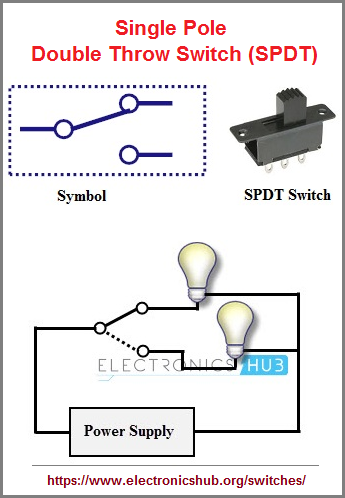
Lots and lots of switches to a basic circuit are now being applied in electronics, and is a primary issue in the development of the computer beyond its binary operation which is recognized as having limitations. Computers are boxes with multiple switches taking place at the same time. And yet, it is being recognized as a crude setup, just as my switch was viewed by a neighbor. The present underlying switching of computers is now noted as being too slow and too expensive, creating its own issues of costs, even though there are those who buy costly lawn mowers and costly computers. They are the exception and not the rule. And let us not overlook the fact that presumed "labor saving devices" are all switches, and that the adoption of such switches creates conditions for others to create other switches, some of which are in the realms of legislations, law enforcement, and judicial proceedings, not to mention education and training thereof.
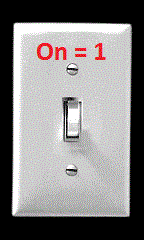 A common 'person speed' of switching. |
 After drinking coffee or an energy drink. |
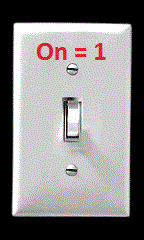 A very slow computer switching speed. |
Let's Talk Peace page 8
One of the tasks which I assigned myself to yesterday morning was addressing the issue of a 1997 Ford F250 extended cab pickup with duel tanks that has a it will run-for-awhile /not/ run-for-awhile issue. We could drive it for 10 miles and then it would stop. It would not start again until the next day. Yet, it progressively got worse. In addressing the problem I checked fuel pump pressure which was good at times, then there was no pressure at all. Changing the fuel pressure regulator, gas filter, checking electrical and gas lines were to no avail. Checking the impact switch turned up nothing. The owner had both fuel pumps changed before by his daughter and her husband on a previous occasion, and thus thought it best to have holes cut into the old bed to make it easier to get to the pumps incase they needed changing, since removing the gas tank or bed were unwelcomed alternatives. So I cut two holes in the old bed, causing me to cut through part of the rear tank and a breather tube. This was due to the bed having been squashed by too carrying too heavy of a load on several occasions. The bed had been severely flattened causing it to compress the breather line and little to no space between it and the gas tank and other lines. However, the point to be made in this narrative is that the designers of the truck created a system in which multiple switches have been installed under the premise of safety, though this frame of thinking is not consistent from one vehicle to the next since alternative forms of switches are used... making the diagnosis of a problem more difficult if a wiring and fuel line diagram are not readily accessible, and those on a youtube presentation have not encountered a similar problem to assist you in diagnosing the one you are experiencing.
Since I now get no fuel out of either fuel pump (though they can be heard engaging while turning on the key and thus go through the process of attempting to prime the system), and I have removed the lines leading to the fuel filter so as to by-pass this line of switching (a fuel filter is a type of switch that will turn off the fuel flow if it gets too dirty), removing the electrical harness from the fuel pump and attaching a "hot" wire to it directly, will thus by-pass all relay types of switches under the hood. In other words, the idea of "switches" as a metaphor for alternative directions, such as stop, go and divergent can be related to atomic particles and biological events, not to mention models being used in art, music, mathematics, sports/military strategies, etc... Indeed, every time we do or don't make a purchase at a store one or another switch is activated in our brain or some alternative physiological network.
While switching in genetics (such as 3 stop and 1 start codon) is "easily" recognized, those switches on the atomic level are more difficult to discern. In our experimental efforts to compensate for not being able to easily see microscopic and atomic switches occurring in physics, biology and electronics, we often create designs involving simple one- two- three patterns, such as the double-slit and double-blind strategies already mentioned on the page 30 A and page 30 B in this series. Yet, we do not actively attend to applying an active consciousness to the realization that such designs may well created situations which dispose us to think in a pattern-of-one (singularity/monality), pattern-of-two (duality/binary), and/or pattern-of-three (triplicity/ternary), whereby we create an attendant philosophy and body of oriented research to supplement what we think is a justifiable direction because of the results defined by a particularly designed experimental procedure involving a one, or two, or three parameter.
Yes, our philosophy, attached with such experimental evidence may well give us the impression we are right, but we are right only in as much as we have created a given experimentation of one and/or two and/or three switches. For example: We take a simple on/off... start/stop... upward/downward... in/out... mouth/anus... high energy/low energy... strong acid/weak acid... etc., switchable item... be it a sound, a feeling, a light bulb, a biological growth, a chemical reaction, etc..., and add a "string theory" of wires to it so that the event(s) can occur close up (such as when using a microscope whose "lines" are either natural light, electron light, etc...) or placed at a distance (such as in getting away from an attempted explosion). And yet, someone comes up with the idea which occasions the development of an interrupter type of "just in case this-or-that something happens" fail-safe switch. And then someone else develops the rationale for yet another switch. So now we have three switches, all of which are justifiable, but have created a "complexification" for which only an intimate few understand the connections and they have locked away, or developed a "pay-per-view", or "membership-only" means of restricting access to the schematic, which turns out to be a convolution of switches any pre-teen kid developing a switch for a lawn mower's spark plug system easily identifies with. Whereas the labeling and associated symbolism (mathematics or otherwise) may be used by those engaging in their own unrecognized "secret password/handshake" activity, the underlying this and that and another switching is actually quite simple and can be redesigned from its crudely applied state of development, though the amount of money and labeled positions of those involved in its design, have added their own presence-of-mind convolutions to the mix.
Attempting to gather information for the afore-mentioned trouble-shooting effort in addressing the no fuel situation with the Ford Truck, I have encountered those who often talk a good talk (which some of them do instead of actually showing any mechanical application), but can not really provide a means by which everyone will readily understand what and why they are doing what they are claiming to have done in solving what they describe as a problem Necessarily so, some reading this series of pages may have difficulty making the analogical connections I am trying to convey, particularly when they need some visual representation because their mind's do not readily create a working vision for them.
One of the questions to be pose is whether nature uses various efforts for attempting to design different models of switches, or... and creates new models or parameters which incorporate old switching mechanisms and methodologies which give us the impression of a unique design, but is actually a crude design being packaged in a new cover?
Is Nature on the order of a shade-tree or junk yard mechanic? Is Nature a do-it-yourselfer that has to figure out things for itself because there are no readily available or understandable schematics which are accessible? Does Nature "make-do" with the materials at hand within the guidelines of the crudely organized schematics within a 'brain' that is like that of an "old-timer" whose education is one of hard knocks? Is this the Nature of Nature? Is this how Nature originated? Like an abandoned waif set adrift onto the ocean(s) of the Universe and "one" (or three?) of its survivors landed on the shores of Earth? While this Narrative may be rather crude in describing the "three" base which we are encountering as "founding" ideas, it does (crudely) explain the rather happenstance crudeness we find in all the subjects humanity is crudely involved with, despite its efforts to sophisticate the subjects by application of money, ceremony and garments of language(s).
If we can make an analogy between nature and human activity, that which was the thinking indulged in by many ancient cultures who thought the forces of nature were directed by human-looking gods and goddesses, we might then, in the present context describe Jesus, Mohammed, Buddha and other religious figures as types of itinerant, on-the-road salesman, with a handyman type of generalist philosophy that could "switch hats" so-to-speak, depending on context, to deliver what they thought were the necessary goods or skills (philosophical switches) for a given task.
The Yin/Yang philosophy is a good example of thinking in terms of a simple switching mechanism occurring with the brain, and can be used to train the "brain muscle" to use this formula of mental switching at different speeds adopted to other tasks, most of which one may not be conscious of, though some martial artists think they are control of the switching by an accelerated "expression" involving some maneuver. Humans can be very persuasive in creating convincing illusions that sometime evolve into socially accepted delusions, such as in the case of believing in witches, spontaneous generation, magic, religion, virgin birth, LGBTQ nonsense, mythological creatures, peace defined by an absence of war, that governments are preeminently concerned with equality and human rights, Human-centered god, etc...
However, let us move on to a central theme in dealing with switches, one of which is the application to computer technology for the underlying purpose of generating revenue. Here is one example. Note the references to patterns-of-two and patterns-of-three:
Uncovering Two Competing Switching Mechanisms for Epitaxial and Ultrathin Strontium Titanate-Based Resistive Switching Bits
Markus Kubicek, Rafael SchmittFelix Messerschmitt, Jennifer L. M. Rupp
ACS Nano 201591110737-10748
Publication Date: October 8, 2015
Citation Link
© 2015 American Chemical Society
Abstract
Resistive switches based on anionic electronic conducting oxides are promising devices to replace transistor-based memories due to their excellent scalability and low power consumption. In this study, we create a model switching system by manufacturing resistive switches based on ultrathin 5 nm, epitaxial, and grain boundary-free strontium titanate thin films with subnanometer surface roughness.
For our model devices, we unveil two competing nonvolatile resistive switching processes being of different polarities: one switching in clockwise and the other in counterclockwise direction. They can be activated selectively with respect to the effective switching voltage and time applied to the device. Combined analysis of both processes with electrical DC-methods and electrochemical impedance spectroscopy reveals that the first resistive switching process is filament-based and exhibits counterclockwise bipolar resistive switching. The ROFF/RON resistance ratio of this process is extremely stable and can be tuned in the range 5–25 depending on the switching voltage and time. Excitingly, at high electric field strength a second bipolar resistive switching process was found. This process is clockwise and, therefore, reveals the opposite polarity switching direction when compared to the first one. Both processes do not obstruct each other, consequently, stable 1, 2, or even 3 crossover current–voltage (I–V) characteristics can be addressed for the memory bits. Equivalent circuit model analysis and fitting of impedance characteristics unequivocally show for the created grain boundary free switches that the oxide’s defects and its carrier distribution close to the electrode interface contribute to the resistive switching mechanism. The addressability of two sets of resistive ON and OFF states in one device through electric field strength and switching time offers exciting new operation schemes for memory devices.
Wherever one encounters the notion of "flow", (or ebb and flow— along with motionlessness or lull), such as with electricity, water, emotion, fluids, gases, particles, or any of the many labels we might apply found in different subjects, we might well attach one or more switches to, and not all of them being electrical or mechanical in design. Many of them are philosophical, or remain in a realm of expression such as a sound, a sight, a feeling, an impression, a shadow, an inclination, or symbol... such as the usage of mathematics acting as a switching mechanism to alter direction of thought. And along with switches some might think in terms of applying gates, or doorways... (swinging, revolving, side-to-side, up-and-down. diagonal, etc...), or tunnels, bridges, swings, teetering boards, merry-go-rounds and slides; such as toll booths (or government "open door" policies) with a price... or a loss... or a gain... or some alternative exchange of goods and/or services to be traded elsewhere. The notion of switches and gates can be applied quite expansively... not only as singularities, but as a pattern-of-two leading to a third... such as the switch (lock) at a gate leading to a path.
Yet, the idea of applying the notion of electrical switching to biology and other subjects is not a new idea. Here is one example:
Biological systems are adapted to respond quickly to changes in their environment. Signal processing often leads to all-or-none switch-like activation of downstream pathways. Such biological switches are based on molecular interactions that form positive feedback loops. Proper signal processing and switching have to be made by the noisy interactions of fluctuating molecular components; still, switching has to happen quickly once a threshold in the input signal is reached. Several computing algorithms have been designed to perform similar all-or-none decisions with high efficiency. We discuss here how the structure and dynamical features of a computational algorithm resemble the behaviour of a large class of biological switches and what makes them work efficiently. Furthermore, we highlight what biologists can learn by looking at specific features of computational algorithms. Computer Science has Influenced Our Thinking about Biology... https://www.ncbi.nlm.nih.gov/pmc/articles/PMC5215766/
While the application of the idea concerning "switching" is not new, the idea of identifying a recurring "threesological" constraint and repetition is. No less, the analogy between electricity and other types of switches can be applied too literally, whereby that which it is applied to may be subject to the constraints electricity appears to conform to— because everything and anything is reduced to an electrically based connection, instead of flipping this around in order to provide an insight in how to move beyond the presently adhered to boundaries of basic electrical functionings, because electrical circuitry has come to dominate too much our thinking and acts as a force-field or forbidden zone for any would-be adventurist creative thinker who does not permit academic or institutional orientations install blinders or harness on them.
Origination date: Friday, October 18th, 2019... 3:01 AM
Initial Posting: Tuesday, October 22nd, 2019... 9:05 AM
Updated Posting: Friday, January 20th, 2023... 12:27 PM
Herb O. Buckland
herbobuckland@hotmail.com
